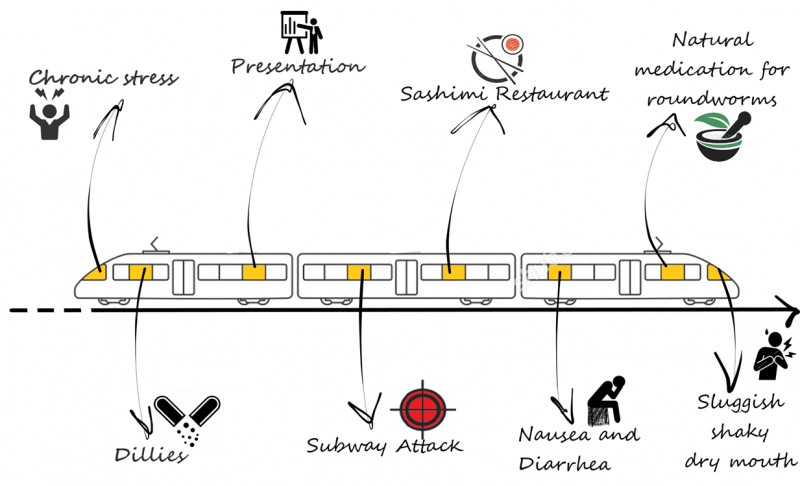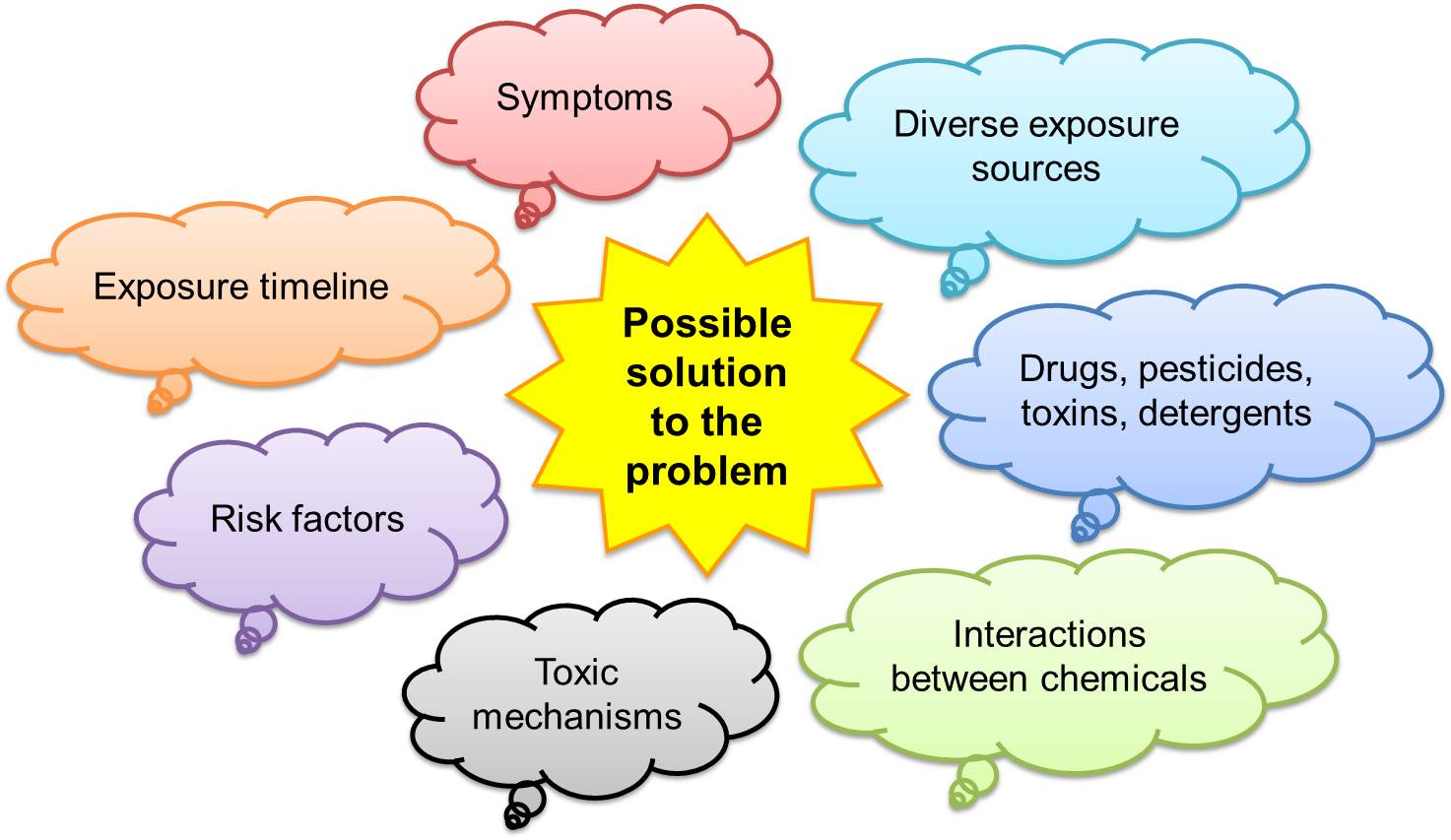
The Famous PBL Concept and Home Exams
Problem Based Learning or better known as “PBL” is a relatively new and innovative learning method which is commonly used at KI. Home exams are also widely used as teaching tools and they are normally applied as final exams. During this blog I will explain in a very detailed way what a PBL is and how it is different from a home exam. I will also provide with some helpful recommendations on how to write successfully a PBL report and the home exam.
The PBL concept
During my short introduction to this blog I already mentioned that a PBL is an innovative learning technique commonly used at KI and more specifically at the Toxicology programme. But what is a PBL in practical terms? Well, this teaching tool is an abstract of a problem/situation in which you get information regarding symptoms and exposure sources that the characters of the problem experienced and were exposed to. This is a very interesting concept because you and your group (6 people) will have to assume during the whole PBL-process the roles of “toxicity detectives”.
The PBL steps
The PBL is a written report that consists of 7 steps from which step 5 is the most important and longest one (2-3 days). Steps 1 to 4 are carried out in group in one single session (1 hour). During this meeting all members will clarify terms, define the problem, brain storm, generate theories and catalogue what is needed to solve the problem. This process will be monitored by a tutor who will supervise that the team has encompassed all key points. Step 5 consists mainly of individual mechanistic research. This means that each member of the group will get 1 or 2 toxicants to work with.
The aim is to find toxic mechanisms that fit with the symptoms given by the PBL and like that give a solution to the problem. Step 6 involves an oral presentation in which all members must be able to expose all PBL’s parts. This is because during the session you will not have the option to choose which part you want to expose. This is important because it will demonstrate that you studied your PBL and that you learned from it and not only the part you worked with. Finally, step 7 occurs right after the oral presentations. This one involves a group analysis on how you felt during the PBL, what you learned out of it, what could be improved etc.

Reporting the PBL
To close this section it is important to mention some of the written report features. The first and most critical one is the limit of characters. For this report you will have maximum 8,000 characters including spaces. Personally I do not agree with this requirement because even if this type of work must be precise and concise, we usually have many chemicals to work with and make all the important information fit in so short space is always a headache. Another feature is the report’s structure. This encompasses an introduction, brief summary of the problem, toxicants and their mechanisms, suggested solution and conclusion.
How is a home exam at the Toxicology programme?
A home exam is a type of evaluation in which students have the opportunity to answer questions based on scientific literature. Actually, a home exam is not very different from a PBL. In a home exam you will get questions from which you will have to do a research about a main topic and then in your own words write concise answers. This might sound easy and simple, but it is not quite like that. For these examinations you will have approximately 7 hours to answer all the questions (approx. 6-7 questions per exam). So… Why does it take that long? Well, because as I said before, the exams are similar to a PBL and this implies a lot of toxic mechanistic research and yes… Doing research for toxic mechanisms takes a great amount of time.
It is also very important to mention that the exam is 100% individual; this means that you are not allowed to collaborate or discuss possible answers or sources with your classmates. I consider that this type of examination is very good for students to learn and practice, even more on how to perform scientific research in the correct way. This is as well, a very intense and exhausting experience that makes you feel like a zombie after you have finished it.
-

“Credits: Nick Morrison” -

“Credits: Rishabh Agarwal”
How are they different?
Here is a table to make an easy and fast comparison of the differences between these two learning tools:
| PBL | Home exam | |
| Duration | 4 – 6 days (Steps 1-7) | 2 days (one exam per day) |
| Character limit | 8,000 with spaces | 3,500 with spaces |
| Number of evaluated toxicants | Between 5 and 9 | Between 2 and 5 |
| Number of evaluated target organs | One per PBL | Between 3 and 6 |
| Structure | Introduction, summary of the problem, toxic mechanisms, solution to the problem, biomarkers (if necessary) and conclusion | There is no specific structure but it may contain the next: Route of exposure, organ(s) related to a certain toxicant, target organ(s) for an specific toxicant, mechanisms, adverse outcomes, etc. |
| Level of intensity | Moderated to High | Very high |
Recommendations
I want to conclude this blog with some practical tips and advices that will help you to write your PBL reports and home exams in a nicer way:
- Have a good communication with your team during the PBLs, this is essential for a good report
- Participate actively during steps 1-4
- Avoid plagiarism at all costs, write everything in your own words
- Keep track on your references, this will save a lot of time and stress at the end
- Try to be synthetic while writing your paragraphs, this means: use short sentences
- If you do not know how to write references, use KI Library services, there you will find examples on how to do it
- Before starting the home exam, design a strategy and follow it during the exam, this will save you a lot of time
- Do not get stuck in small details while searching for mechanisms, focus only on the essential
I hope this blog had been useful and that it helps you to make your PBL reports and home exams smoother!
Good luck and if you have any more questions don’t hesitate and contact me!
Aline Colonnello: gloria.aline.colonnello.montero@stud.ki.se
Aline Colonnello - Toxicology
My name is Aline Colonnello Montero, I am twenty five years old and I come from the wonderful but busy Mexico City. I consider myself to be a perseverant person who works hard to meet all my goals and ambitions. I have a bachelor’s degree in Biology and I currently study the Master’s programme in Toxicology at Karolinska Institutet. My job as part of the digital ambassadors’ team consists on writing blogs

3 comments